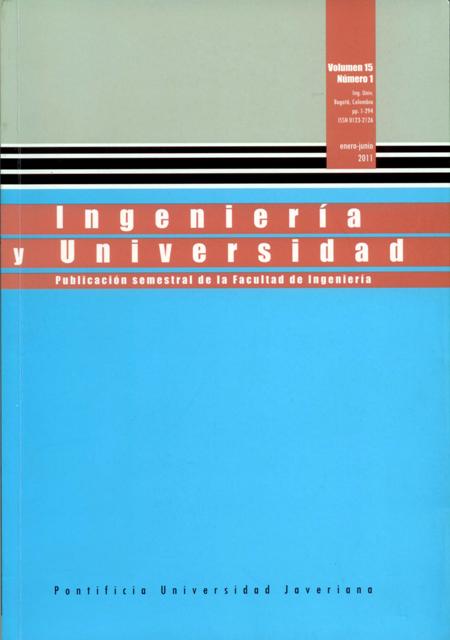Abstract
This paper presents the typical characteristics in a massive electric traction transportation system using trams, such as size, weight and passenger capacity. It also describes the characteristics of the electric supply, like AC or DC, and the connection means to the medium voltage electric power distribution system like, for example, rectifier substations. Finally, it presents a number of examples of cities where this transportation system is used.
CHAPAS, P. Composantes et applications électriques du système ferroviaire. En: Techniques de l’Ingénieur. Alstom Transport, 2003.
COUGNON, P. H. y CAVENAILE, F. The Brussels Tramway 2000 with Asynchronous Traction. The European Power Electronics Association. 1993, vol. 5, núms. 13-16, pp. 299-302.
FISHER, I. y BOLTON, G. Auxiliary power systems for rolling stock. Metronet Rail. 2006, pp. 167-175.
FORERO, M. Aplicaciones de electrónica de potencia en tracción vehicular. Proyecto de grado. Bogotá: Universidad de los Andes, Departamento de Ingeniería Eléctrica y Electrónica, 2006.
GOODMAN, C. Overview of electric railway system and the calculation of train performance. The 9th Institution of Engineering and Technology Professional Development Course on Electric Traction Systems. Electric Traction System, Manchester, 2006, pp. 1-24.
MULLER, G. Tramway. Techniques de l’Ingénieur, August, 2000.
PERRIN, J. P. y VENARD, C. Transports électriques urbains – Distribution d’énergie. Automatismes de contrôle. Techniques de l’Ingénieur, 1991.
PRC RAIL CONSULTING. Railway technical web pages electric traction, 2008. <http://www.railway-technical.com/elec-loco-bloc.shtml> [consulta: 15-03-2008].
STEIMEL, A. Electric railway traction in Europe. IEEE Industry Applications Magazine. 1996, vol. 1, November, pp. 40-48.
This journal is registered under a Creative Commons Attribution 4.0 International Public License. Thus, this work may be reproduced, distributed, and publicly shared in digital format, as long as the names of the authors and Pontificia Universidad Javeriana are acknowledged. Others are allowed to quote, adapt, transform, auto-archive, republish, and create based on this material, for any purpose (even commercial ones), provided the authorship is duly acknowledged, a link to the original work is provided, and it is specified if changes have been made. Pontificia Universidad Javeriana does not hold the rights of published works and the authors are solely responsible for the contents of their works; they keep the moral, intellectual, privacy, and publicity rights.
Approving the intervention of the work (review, copy-editing, translation, layout) and the following outreach, are granted through an use license and not through an assignment of rights. This means the journal and Pontificia Universidad Javeriana cannot be held responsible for any ethical malpractice by the authors. As a consequence of the protection granted by the use license, the journal is not required to publish recantations or modify information already published, unless the errata stems from the editorial management process. Publishing contents in this journal does not generate royalties for contributors.


